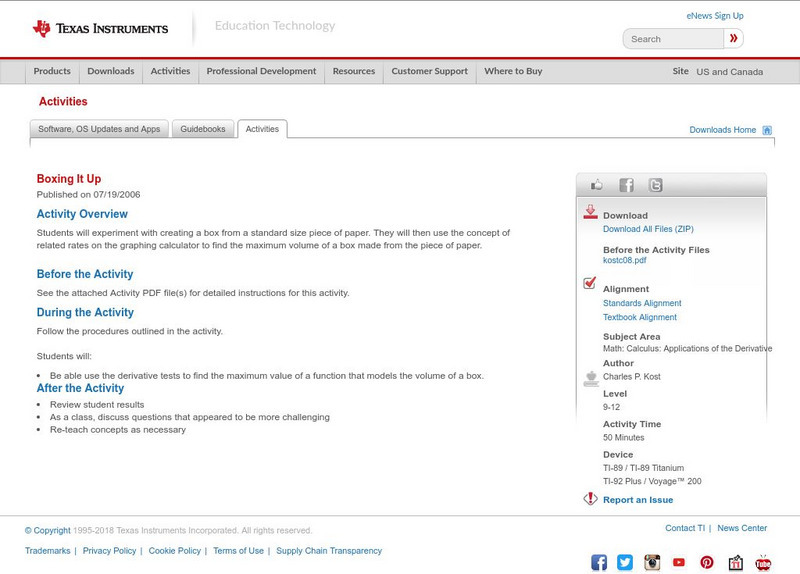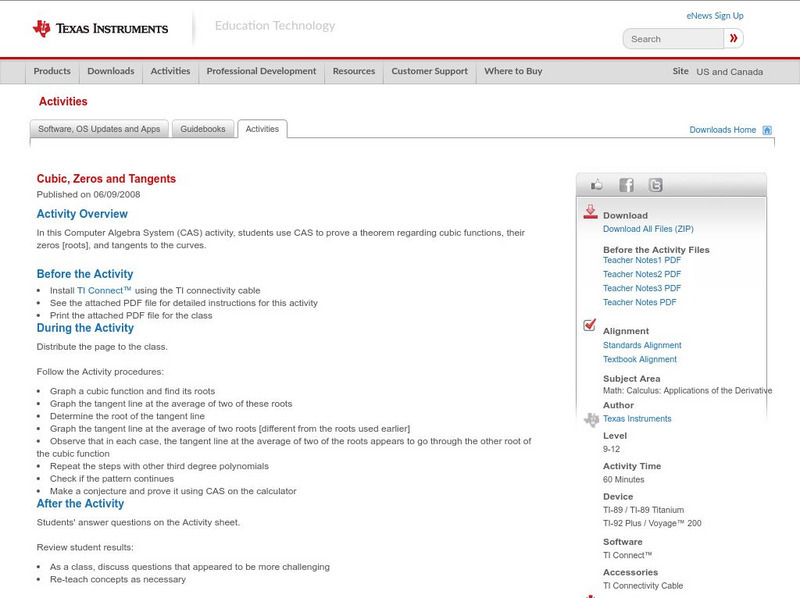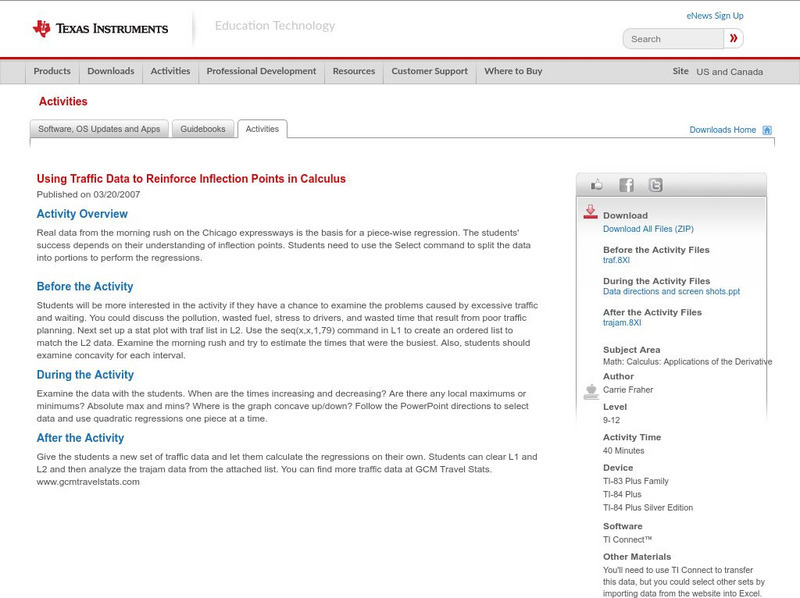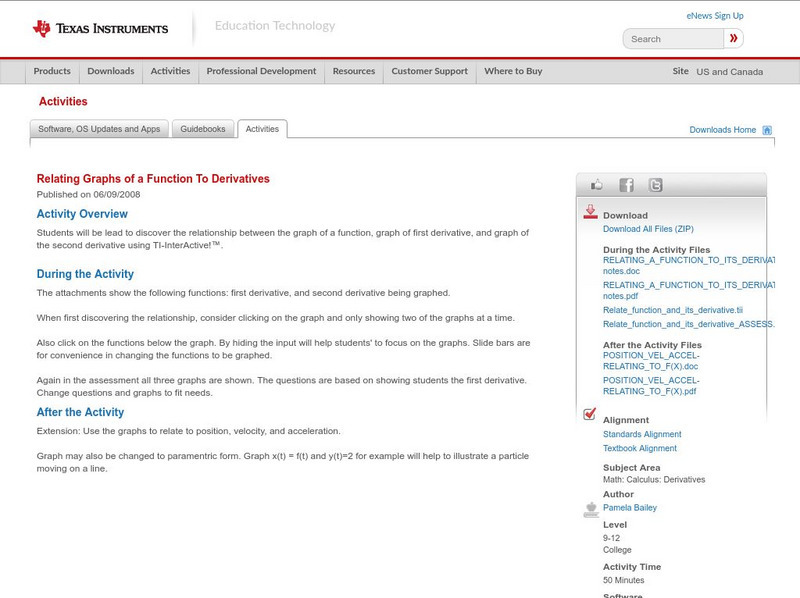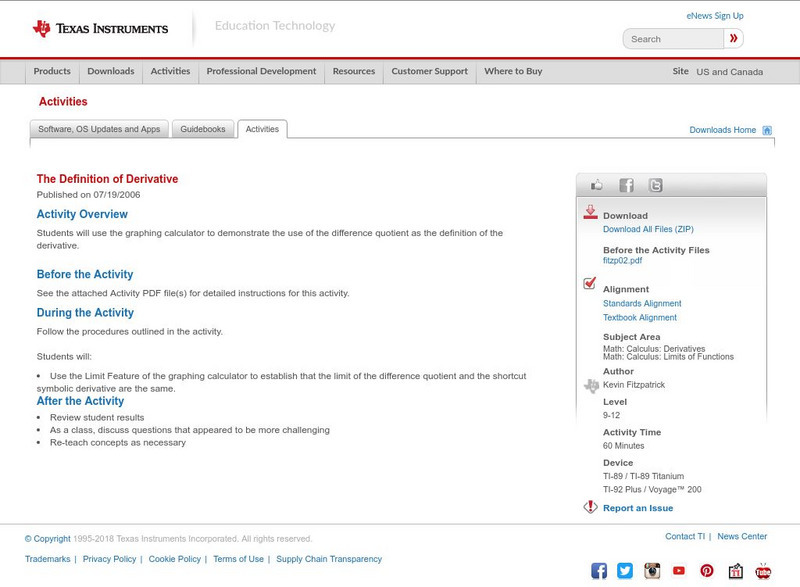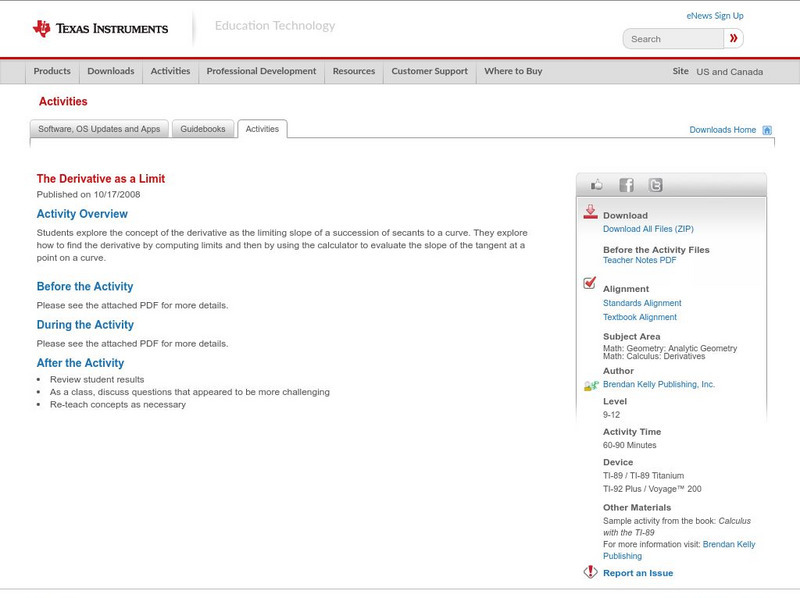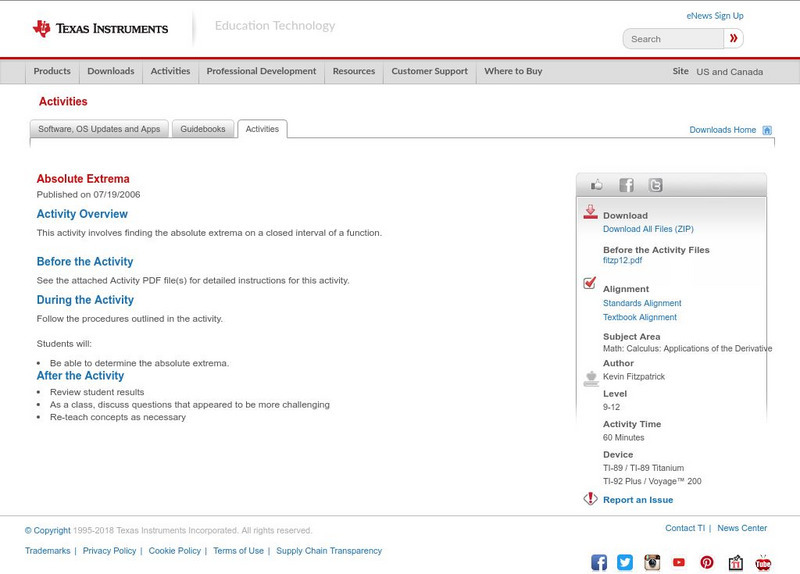Curated OER
Quartic Inflection
Learners use their TI-89 calculator to find properties of the quartic polynomials. The lesson includes detailed instructions along with screen shots of the graphing calculator display.
University of Vienna (Austria)
University of Vienna: The Big Derivative Puzzle
Given a set of four graphs, match each graph with the graph of it's derivative. This exercise helps to visualize the relationship between a graph and it's derivative, and over 50 graphs are available (although only four are used at one...
Varsity Tutors
Varsity Tutors: Hotmath: Practice Problems: Applications of Derivatives
Hotmath provides 25 practice problems dealing with derivative applications. Each of the practice problems include a step-by-step guide.
Other
Matheno: How to Solve Optimization Problems in Calculus
Need to solve Optimization problems in Calculus? This blog illustrates the steps needed to solve them routinely for yourself.
Texas Instruments
Texas Instruments: Boxing It Up
In this activity, students will experiment with creating a box from a standard size piece of paper. They will then use the concept of related rates on the graphing calculator to find the maximum volume of a box made from the piece of paper.
Texas Instruments
Texas Instruments: General Quadratics, Cubics, and Quartics
This activity explores the characteristics of the graphs of quadratic, cubic, and quartic functions. The graphing calculator will be used to generate graphs and derivatives of these functions.
Texas Instruments
Texas Instruments: Computing Derivatives
Sample problems that provide ideas about using SMG to assist students in learning to solve derivative problems. Prerequisites: ability to classify functions as power, exponential, product, and composition and how to decompose composite...
Texas Instruments
Texas Instruments: Quartic Inflection
This activity introduces students to an interesting property of fourth degree polynomials and a method of proving that property using the TI-89 scripts. They then use the CAS of their TI-89 to generalize upon specific results.
Texas Instruments
Texas Instruments: Hot Coffee
This activity is an application of differential equations and slope fields. Students first go through the traditional paper and pencil method of solving a differential equation. (Continued. See "before the activity.")
Texas Instruments
Texas Instruments: Cubic Inflection
This application of derivatives introduces students to an interesting property of cubics and a method of proving that property using the TI-89 scripts. They then use the CAS of their TI-89 to generalize upon specific results.
Texas Instruments
Texas Instruments: Differential Equations
In this activity, students analyze first order, second order, and autonomous systems of two first order differential equations.
Texas Instruments
Texas Instruments: Cubic, Zeros and Tangents
In this Computer Algebra System (CAS) activity, students use CAS to prove a theorem regarding cubic functions, their zeros [roots], and tangents to the curves.
Texas Instruments
Texas Instruments: Using Traffic Data to Reinforce Inflection Points in Calculus
Real data from the morning rush on the Chicago expressways is the basis for a piece-wise regression. The students' success depends on their understanding of inflection points. Students need to use the Select command to split the data...
Texas Instruments
Texas Instruments: Calculus and the Ti 89
The graphing calculator's symbolic capacities make it ideal for teachers and students of calculus. Here are some examples of how teachers and students can use the calculator to better understand calculus.
Texas Instruments
Texas Instruments: Relating Graphs of a Function to Derivatives
Students will be lead to discover the relationship between the graph of a function, graph of first derivative, and graph of the second derivative using TI-InterActive!.
Texas Instruments
Texas Instruments: The Definition of Derivative
Students can use the graphing calculator to demonstrate the use of the difference quotient as the definition of the derivative.
Texas Instruments
Texas Instruments: The Derivative as a Limit
Read about the near-simultaneous discovery of Calculus by Liebniz and Newton, then see some examples worked through of finding derivatives of functions using the limit definition of derivative. Following the examples are exercises with...
Texas Instruments
Texas Instruments: Absolute Extrema
This activity involves finding the absolute extrema on a closed interval of a function.
Texas Instruments
Texas Instruments: Application of the Derivative
In this activity, students learn and explore two common applications of the derivative: optimization and related rate.
Texas Instruments
Texas Instruments: Higher Order Differential Equations
In this activity, students use the calculator to graph the solution to a second-order and third-order differential equations. They convert higher order differential equations by substitution to a system of first order differential...
Texas Instruments
Texas Instruments: The Growth Rings of a Tree
In this activity, the students can use limits to find derivatives and to find the relationship between radii and area. This activity uses tree growth as the basis for the activity.
Texas Instruments
Texas Instruments: Logistic Growth, Differential Equations, Slope Fields
In this Computer Algebra System (CAS) activity, students investigate differential equations analytically, graphically and numerically and see relationships between the three approaches.
Texas Instruments
Texas Instruments: Derivative Formulas
Students use StudyCards(tm) to complete derivative functions.
Texas Instruments
Texas Instruments: Derivatives
This is a set of problems involving the concepts of derivatives. The problems are similar to those encountered during the second quarter of a typical calculus course.




